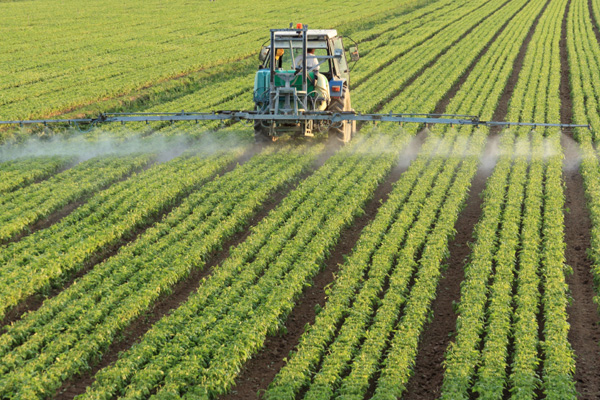-

Erin Donahue -

Christina Barkanic -

Brittany Trott -

Emily Wiley -

Jessica Reilley -

Chris Raines -

Will Nichols -

Emily Reddy -

Michele Marchetti -

Michele Frank -

James Gherardi -

Kit Henshaw -

Christina and Erin -

Kim Tait -

Erin McKinney -

Steve Spanelli -

Sam Komlenic -

Katherine Taylor Grofic -

James Eisenstein -

Jamie Oberdick -

Anna Lombardo -

LacCreta Holland -

Tony Ricci -

Local Food Journey -

Laura Young -

Kristin Camplese -

Harrison's Fresh + Local -

Danielle Matalonis -

Kristine A. -

Linda Weaver -

Naomi Elle Schwartz -

Dana Stuchul -

Cara McShane -

Brittany Smith -

Jessica Illuzzi - Frosty
-

Jessica Paholsky -

James Sechrengost -

Brad Yeckley -

Maya Althouse -

Jordan Reabold -

Kim Chase -

Maria Bryant - Alexandrea Scott
Why Organic? Part 3: Pesticides
Posted by James Eisenstein on 03/22, 2012 at 11:09 AM

Photo Courtesy iStock.
It’s confession time. I made a small mistake, so uncharacteristic of me, as I’m sure you will agree. You see, in Part 3 of my series “Why Organic?†I wanted to talk about how pesticides are bad for our health and the environment, and then do the same for GMOs.
I intended to make a few, short, simple points about the health effects of pesticides—like they aren’t good for us (especially children) and they aren’t adequately tested and regulated.
My mistake? I decided to do a little Google research for the health effects paragraph, anticipating my inquiring readers’ insistent demands for “evidence.†The more I found out, the clearer it became that just one paragraph wouldn’t do.
Let’s begin by naively assuming that current EPA regulation insures that its established limits for residue from each of its approved pesticides are indeed “safe.†I found a 1989 National Research Council publication titled “Diet and Health†that, while generally raising no alarms about bad health effects from pesticide residue, nonetheless noted that “any assessment of the health effects of exposure to pesticide residues must take into account the potential synergistic interactions and the limited nature of toxicity data on several compounds.†[Interesting side note: This study does not mention organic food even once!]
There are about 875 EPA registered pesticides, and a total of a billion pounds of them are applied each year. When you eat, you can’t ingest just one.
As Penn State biology major John Kepner, project director at Beyond Pesticides, notes, “Pesticide exposures in the real world are not isolated incidents. Rather, they are a string of incidents marked by combinations of exposures. As a result, scientists have argued for years that toxic exposures to pesticides should be measured as they would normally occur, in combination with one another.â€
But practically no testing for and indeed very little research on synergistic effects is done. EPA establishes “safe†levels for new pesticides one by one without regard to their possible interactions with other products already in use.
How good is the assumption that EPA’s regulation of pesticides indeed effectively ensures the safety of pesticides? Can you guess?
EPA’s regulation is deeply flawed. It is charged with making decisions on the basis of a “cost-benefit†analysis where health and safety are but one factor.
Costs arising from hazards to human health are weighed against economic benefits to conventional growers from higher yields or reduced production costs. And there are so many pesticides to judge even by these questionable standards, that many are being used that have not been tested.
Also, “inert†ingredients are not listed or tested. Other hazards (e.g. ozone layer depletion) are ignored. Safety is determined for the average person, ignoring more vulnerable children and old timers. Further, manufacturers themselves provide safety data. Hummm.
If I were an even-tempered sort of fellow, I’d say there is reason for concern about the safety of pesticides.
![]() Author: James Eisenstein
Author: James Eisenstein
Bio: Unpaid Field Hand at Jade Family Farm | Former Penn State Professor
- Our Local Food Journey comes to an end
- Winter isn’t a quiet time at the farm
- Get the taste of garden season right now by growing herbs indoors
- All you need to know about PASA’s Farming for the Future conference









NO COMMENTS